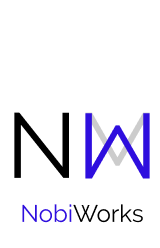
What does that have to do with brands?

Well, most brands aren't set up to get their owners better seen, heard and respected.
Here’re the basics:
A brand is a system of ideas that influences the behaviors of others.
(a bit different from what you’ve heard before, no?)
Brands built without understanding this basic truth don’t account for little things like systemic bias and the ways in which it affects the kinds of influence we have.
This just in: you’re short on influence
Also breaking: it’s not your fault.
If you’re an underestimated innovator, tastemaker or disruptor (read: if you’re here, then you are), you are facing systemic barriers to visibility, influence and success. Full Stop. And if you're trying to make the world a better place at the same time? You've got a triple bind:
People have been conditioned to ignore you
The status quo has brain chemistry on it's side
Isms make a viable, sustainable organization in alignment with your values a heavier lift
That isn’t an accident. It’s an Equity Tax, a natural consequence of the poisonous power relationships that surround us all. Conclusion? Cookie Cutter isn’t going to cut it.
Your Equity Tax may look like…
An Invisibility Tax
e.g. Problems positioning yourself as an authority or even just “a part of the club” and the consequences that arise as a result.
A Reciprocity Gap
Getting less than your peers because of a marginalized identity.
An Ambition Penalty
Often mislabeled as a “Confidence Gap,” in women and girls.
or something we haven’t even discovered yet.
Brands are resources of something we in the international politics set call “soft power.” It’s why brands can become legacies. Soft power, involves the use of appeal, attraction and persuasion to achieve objectives and to shape the preferences of others—which is exactly what effective brands do. And while many effective (read: influential) brands are built to get one’s work better seen, understood and trusted, they aren’t built to overcome equity taxes at the same time.
Conclusion: most brands aren’t set up to overcome Equity Taxes. So, if we want to turn up your impact, we have to amplify your influence.
An equitably influential brand allows you to claim influence and to become a better steward of the power you do have precisely because it takes into account the power dynamics at play in our lives.
It makes sure you’re never asked to use privilege you don’t have.
Building one means leveraging a systematic understanding of human behavior and an equally rigorous measurement of the distribution of power around you.
Enter Representation Equity.

Representation equity is a quantifiable status. It is the point at which we reach a critical mass of influential, underestimated leaders strategically positioned for ultimate social impact. We’re not there yet—otherwise you’d be in the “rooms where it happens.” But that is the vision this lab has for the world.
Here’s what this means for you:
It means a double heap of justice.
A platform that does you AND your ideas justice by positioning you to navigate the biases designed to hold you back.





